Assam
By Kunal Singh
Assam is a state of India in the north-eastern region. Located south of the eastern Himalayas, Assam comprises the Brahmaputra Valley and the Barak river valleys along with the Karbi Anglong and theNorth Cachar Hills with an area of 30,285 square miles (78,438 km2). Assam is surrounded by six of the other Seven Sister States: Arunachal Pradesh, Nagaland, Manipur, Mizoram, Tripura, and Meghalaya. Geographically Assam and these states are connected to the rest of India via a strip of land in West Bengal called the Siliguri Corridor or "Chicken's Neck". Assam shares international border with Bhutan and Bangladesh; and culture, people and climate with South-East Asia – elements in India’sLook East policy. Assam became a part of British India after the British occupied the region following the First Anglo-Burmese War of 1824–1826.
Assam tea is produced here along with petroleum and Assam silk. The state has conserved the one-horned Indian rhinocerosfrom near extinction, along with the pygmy hog, tiger and various species of birds. It provides one of the last wild habitats for theAsian elephant. The economy is aided by wildlife tourism while the Kaziranga and the Manas National Parks are designated asWorld Heritage Sites. Sal tree forests are found in the state, which as a result of rainfall looks green all year round. This rain feeds the Brahmaputra River, whose tributaries and oxbow lakes provide the region with a hydro-geomorphic and aesthetic environment.
Etymology
The precise etymology of "Assam" is unknown. In the classical period and up to the 12th century the region east of the Karatoya river, largely congruent to present-day Assam, was called Kamarupa, and alternatively, Pragjyotisha. In medieval times the Mughals used Asham (eastern Assam) and Kamrup (western Assam), and during British colonialism, the English used Assam. Though many authors have associated the name with the 13th century Shan invaders the precise origin of the name is not clear. It was suggested by some that the Sanskrit word Asama ("unequalled", "peerless", etc.) was the root, which has been rejected by Kakati, and more recent authors have concurred that it is a latter-day Sanskritization of a native name. Among possible origins are Tai (A-Cham) and Bodo (Ha-Sam).
Medical Colleges includes Assam Medical College in Dibrugarh, Gauhati Medical College and Hospital in Guwahati, Silchar Medical College and Hospital Silchar. Also Lokopriya Gopinath Bordoloi Regional Institute of Mental Health, Tezpur (Central Government Institute).[90]
Research institutes present in the state include National Research Centre on Pig, (ICAR) in Guwahati,[91]
History[edit]
Main article: History of Assam
Pre-history[edit]
Assam and adjoining regions have evidences of human settlements from all the periods of the Stone ages. The hills at the height of 1,500–2,000 feet (460 to 615 m) were popular habitats probably due to availability of exposed dolerite basalt, useful for tool-making.[14]
Mythology[edit]
According to a late text, Kalika Purana (c. 9th–10th century AD), the earliest ruler of Assam was Mahiranga Danav of the Danava dynasty, which was removed by Naraka who established the Naraka dynasty. The last of these rulers, also Naraka, was slain byKrishna. Naraka's son Bhagadatta became the king, who (it is mentioned in the Mahabharata) fought for the Kauravas in thebattle of Kurukshetra with an army of kiratas, chinas and dwellers of the eastern coast.
Ancient[edit]
Further information: Kamarupa
Samudragupta's 4th century Allahabad pillar inscription mentions Kamarupa (Western Assam) and Davaka (Central Assam) as frontier kingdoms of the Gupta Empire. Davaka was later absorbed by Kamarupa, which grew into a large kingdom that spanned from Karatoya river to near present Sadiya and covered the entire Brahmaputra valley, North Bengal, parts ofBangladesh and, at times Purnea and parts of West Bengal.
Ruled by three dynasties Varmanas (c. 350–650 CE), Mlechchha dynasty (c.655–900 CE) and Kamarupa-Palas(c. 900–1100 CE), from their capitals in present-day Guwahati (Pragjyotishpura), Tezpur (Haruppeswara) andNorth Gauhati (Durjaya) respectively. Country was 10,000 li (6000 km) in circuit and capital city Pragjyotishpura was about 30 li (18 km). All three dynasties claimed their descent from Narakasura, an immigrant fromAryavarta.[18]
In the reign of the Varman king, Bhaskar Varman (c. 600–650 AD), the Chinese traveler Xuanzang visited theregion and recorded his travels. Later, after weakening and disintegration (after the Kamarupa-Palas), the Kamarupa tradition was somewhat extended till c. 1255 AD by the Lunar I (c. 1120–1185 AD) and Lunar II (c. 1155–1255 AD) dynasties.[14]
Medieval
Three later dynasties, the Ahoms, the Sutiya and the Koch. The Ahoms, a Tai group, ruled Upper Assam for nearly 600 years (1228–1826 AD) while the Sutiya rulers (1187 -1673 AD) held the regions on the north bank of Brahmaputra with its domain from Vishwanath in the west to Parshuram Kund in the east in Upper Assamand in the state of Arunachal Pradesh. The Koch, a Tibeto-Burmese, established sovereignty in c. 1510 AD. The Koch kingdom in western Assam and present North Bengal was at its zenith in the early reign of Naranarayana (c. 1540–1587 AD). It split into two in c. 1581 AD, the western part as a Moghul vassal and the eastern as an Ahom satellite state. Since c. the 13th century AD, the nerve centre of Ahom polity was upper Assam; the kingdom was gradually extended till Karatoya River in the c. 17th or 18th century. It was at its zenith during the reign of Sukhrungpha or Sworgodeu Rudra Simha (c. 1696–1714 AD). Among other dynasty, the Kacharis (13th century-1854 AD) ruled from Dikhow River to central and southern Assam and had their capital at Dimapur. The rivalry between the Sutiyas and Ahoms for the supremacy of eastern Assam led to a series of battles between them from the early 16th century till the start of the 17th century, which saw great loss of men and money. With expansion of Ahom kingdom, by the early 17th century, the Sutiya areas were annexed and since c. 1536 AD Kacharis remained only in Cachar and North Cachar more as an Ahom ally then a competing force. Despite numerous invasions, mostly by the Muslim rulers, no western power ruled Assam until the arrival of the British. Though the Mughalsmade seventeen attempts to invade, they were never successful. The most successful invader Mir Jumla, a governor of Aurangzeb, briefly occupied Garhgaon (c. 1662–63 AD), the then capital, but found it difficult to control people making guerrilla attacks on his forces, forcing them to leave. The decisive victory of the Assamese led by the great general Lachit Borphukan on the Mughals, then under command of Raja Ram Singha at Saraighat (1671) had almost ended Mughal ambitions in this region. Mughals were finally expelled from Lower Assam during the reign of Gadadhar Singha in 1682 AD.
Colonial era[edit]
Further information: Colonial Assam and Assam Province
The discovery of Camellia sinensis in 1834 in Assam was followed by its tests in 1836–37 in London. The British allowed companies to rent land from 1839 onwards. Thereafter tea plantations mushroomed in Eastern Assam,[20] where the soil and the climate were most suitable. Problems with the imported labourers from China and hostilities of native Assamese resulted in migration of forced labourers from central and eastern parts of India. After initial trial and error with planting the Chinese and the Assamese-Chinese hybrid varieties, the planters later accepted the local Camellia assamica as the most suitable one for Assam. By the 1850s, the industry started seeing some profits. Industry saw initial growth, when in 1861, investors were allowed to own land in Assam and it saw substantial progress with invention of new technologies and machinery for preparing processed tea during the 1870s.
Despite the commercial success, tea laborers continued to be exploited,[clarification needed] working and living under poor conditions.[clarification needed]Fearful of greater government interference, the tea growers formed the in 1888 to lobby to retain the status quo. The organization was very successful in this, and even after India’s independence, conditions of the laborers have improved very little.[21]
In the later part of the 18th century, religious tensions and atrocities of nobles led to the Moamoria rebellion, resulting in tremendous casualties of lives and property. The rebellion was suppressed but the kingdom was severely weakened by the civil war. Political rivalry between Prime Minister Purnananda Burhagohain and Badan Chandra Borphukan, the Ahom Viceroy of Western Assam, led to the invitation to the Burmese by the latter,[22][23][24][25] in turn leading to three successive Burmese invasions of Assam. The reigning monarch Chandrakanta Singha tried to check the Burmese invaders but he was defeated after fierce resistance.[26][27][28]
A reign of terror was unleashed by the Burmese on the Assamese people,[29][30][31][32] who fled to neighbouring kingdoms and British-ruled Bengal.[33][34] The Burmese reached the East India Company's borders, and the First Anglo-Burmese War ensued in 1824. The war ended under the Treaty of Yandabo[35] in 1826, with the Company taking control of Western Assam and installing Purandar Singha as king of Upper Assam in 1833. The arrangement lasted till 1838 and thereafter the British gradually annexed the entire region.
Initially Assam was made a part of the Bengal Presidency, then in 1906 it was a part of Eastern Bengal and Assam province, and in 1912 it was reconstituted into a chief commissioners' province. In 1913, a legislative council and, in 1937, the Assam Legislative Assembly, were formed in Shillong, the erstwhile capital of the region. The British tea planters imported labour from central India adding to the demographic canvas.
After a few initial unsuccessful attempts to gain independence for Assam during the 1850s, anti-colonial Assamese joined and actively supported theIndian National Congress against the British from the early 20th century, with Gopinath Bordoloi emerging as the preeminent nationalist leader in the Assam Congress.[36] Bordoloi's major political rival in this time was Sir Saidullah, who was representing the Muslim League, and had the backing of the influential Muslim cleric Maulana Bhasani.[37]
The Assam territory was first separated from Bengal in 1874 as the 'North-East Frontier' non-regulation province, also known as the Assam Chief-Commissionership. It was incorporated into the new province of Eastern Bengal and Assam in 1905 after the partition of Bengal (1905–1911) and re-established in 1912 as Assam Province .[38]
The Assam Postage Circle was established by 1873 under the headship of the Deputy Post Master General.[39]
At the turn of the 20th century, British India consisted of eight provinces that were administered either by a governor or a lieutenant-governor. The Assam Province was one among major eight provinces of British India. The table hereafter shows the major original provinces during British India covering the Assam Province under Administrative Office of Chief Commissioner.
The following table lists their areas and populations. It does not include those of the dependent Native States:[40]
| [show]Province of British India[40] | Area (in thousands of square miles) | Population (in millions of inhabitants) | Chief Administrative Officer |
|---|
With the partition of India in 1947, Assam became a constituent state of India. The district of Sylhet of Assam (excluding the Karimganj subdivision) was given up to East Pakistan (which later became Bangladesh).
Modern history[edit]
The government of India, which has the unilateral powers to change the borders of a state, divided Assam into several states since 1970 to satisfy national aspirations of the tribal populations living within the then borders of then Assam. In 1963 the Naga Hills district became the 16th state of India under the name of Nagaland. Part of Tuensang was added to Nagaland. In 1970, in response to the demands of the tribal peoples of theMeghalaya Plateau, the districts embracing the Khasi Hills, Jaintia Hills, and Garo Hills were formed into an autonomous state within Assam; in 1972 it became a separate state under the name of Meghalaya. In 1972, Arunachal Pradesh (the North East Frontier Agency) and Mizoram (from the Mizo Hills in the south) were separated from Assam as union territories; both became states in 1986.
Since the restructuring of Assam after independence, communal tensions and violence remain there. Separatist groups began forming along ethnic lines, and demands for autonomy and sovereignty grew, resulting into fragmentation of Assam. In 1961, the Government of Assam passed a legislation making use of the Assamese language compulsory. It was withdrawn later under pressure from Bengali speaking people in Cachar. In the 1980s the Brahmaputra valley saw a six-year Assam Agitation triggered by the discovery of a sudden rise in registered voters on electoral rolls. It tried to force the government to identify and deport foreigners illegally migrating from neighboring Bangladesh and changing the demographics. The agitation ended after an accord between its leaders and the Union Government, which remained unimplemented, causing simmering discontent.
The post 1970s experienced the growth of armed separatist groups like United Liberation Front of Asom (ULFA) and National Democratic Front of Bodoland (NDFB). In November 1990, the Government of India deployed the Indian army, after which low-intensity military conflicts and political homicides have been continuing for more than a decade. In recent times, ethnicity based militant groups have grown. Regional autonomy has been ensured for Bodo-Kachari community in Bodoland Territorial Council Areas (BTC), for the Karbis in Karbi Anglong and for the people of Dima Hasao district after agitation of the communities due to sluggish rate of development and general apathy of successive state governments towards indigenous communities.
Geography[edit]
Main article: Physical Geography of Assam
See also: Tourism in North East India
A significant geographical aspect of Assam is that it contains three of six physiographic divisions of India - The Northern Himalayas (Eastern Hills), The Northern Plains (Brahmaputra plain) and Deccan Plateau (Karbi Anglong). As the Brahmaputra flows in Assam the climate here is cold and there is rainfall most of the month.Geomorphic studies conclude that the Brahmaputra, the life-line of Assam is an antecedent river, older than the Himalayas. The river with steep gorges and rapids in Arunachal Pradesh entering Assam, becomes abraided river (at times 10 mi/16 km wide) and with tributaries, creates a flood plain (Brahmaputra Valley: 50–60 mi/80–100 km wide, 600 mi/1000 km long).[43] The hills of Karbi Anglong, North Cachar and those in and close to Guwahati (also Khasi-Garo Hills) now eroded and dissected are originally parts of the South Indian Plateau system.[43] In the south, the Barak originating in the Barail Range (Assam-Nagaland border) flows through the Cachar district with a 25–30 miles (40–50 km) wide valley and enters Bangladesh with the name Surma River.
Urban Centres include Guwahati, one of the 100 fastest growing cities in the world.[44] Guwahati is the gateway to the North-East India.Silchar, (in the Barak valley) the 2nd most populous city in Assam and an important centre of business, education and tourism. Other large cities include Dibrugarh, a oil, natural gas, tea and tourism industry;[45] Nagaon, and Jorhat.
Climate[edit]
With the "Tropical Monsoon Rainforest Climate", Assam is temperate (summer max. at 95–100 °F or 35–38 °C and winter min. at 43–46 °F or 6–8 °C) and experiences heavy rainfall and high humidity.[43][46] The climate is characterized by heavy monsoon downpours reducing summer temperatures and affecting foggy nights and mornings in winters, frequent during the afternoons. Spring (Mar–Apr) and autumn (Sept–Oct) are usually pleasant with moderate rainfall and temperature. Assam's agriculture usually depends on the south-west monsoon rains.
Fauna
See also: Biodiversity of Assam
Assam is one of the richest biodiversity zones in the world and consists of tropical rainforests,[47] deciduous forests, riverine grasslands,[48] bamboo[49] orchards and numerous wetland[50] ecosystems; Many are now protected as national parks and reserved forests.
Assam has wildlife sanctuaries, the most prominent of which are two UNESCO World Heritage sites[51]-theKaziranga National Park, on the bank of the Brahmaputra River, and the Manas Wildlife Sanctuary, near the border with Bhutan. The Kaziranga is a refuge for the fast-disappearing Indian one-horned rhinoceros. The state is the last refuge for numerous other endangered and threatened species including the white-winged wood duckor deohanh, Bengal florican, black-breasted parrotbill, red-headed vulture, white-rumped vulture, greater adjutant, Jerdon's babbler, rufous-necked hornbill, Bengal tiger, Asian elephant, pygmy hog, gaur, wild water buffalo, Indian hog deer, hoolock gibbon, golden langur, capped langur, barasingha, Ganges river dolphin, Barca snakehead, Ganges shark, Burmese python, brahminy river turtle, black pond turtle, Asian forest tortoise, and Assam roofed turtle. Threatened species that are extinct in Assam include the gharial, a critically endangered fish-eating crocodilian, and the pink-headed duck (which may be extinct worldwide). For the state bird, the white-winged wood duck, Assam is a globally important area.[clarification needed
Assam has conserved the one-horned Indian rhinoceros from near extinction, along with the pygmy hog, tiger and numerous species of birds, and it provides one of the last wild habitats for the Asian elephant. Kaziranga and Manas are both World Heritage Sites. The state contains Sal tree forests and forest products, much depleted from earlier times. A land of high rainfall, Assam displays greenery. The Brahmaputra River tributaries and oxbow lakes provide the region with hydro-geomorphic environment.[citation needed]
The state has the largest population of the wild water buffalo in the world.[53] The state has the highest diversity of birds in India with around 820 species.[54] With subspecies the number is as high as 946.[55] The mammal diversity in the state is around 190 species.[56]
Flora
Orchids are grown here.
Geology
Assam has petroleum, natural gas, coal, limestone and other minor minerals such as magnetic quartzite, kaolin, sillimanites, clay and feldspar.[58] A small quantity of iron ore is available in western districts.[58] Discovered in 1889, all the major petroleum-gas reserves are in Upper parts. A recent USGS estimate shows 399 million barrels (63,400,000 m3) of oil, 1,178 billion cubic feet (3.34×1010 m3) of gas and 67 million barrels (10,700,000 m3) of natural gas liquids in the Assam Geologic Province.[59][citation needed]
The region is prone to natural disasters with annual floods and frequent mild earthquakes. Strong earthquakes were recorded in 1869, 1897 (8.1 on the Richter scale); and in 1950 (8.6). A moderate earthquake injured at least six people on November 6, 2013.
Demographics[edit]
Main article: People of Assam
| [show]Population Growth |
|---|
Total population of Assam was 26.66 million with 4.91 million households in 2001.[62] Higher population concentration was recorded in the districts of Kamrup, Nagaon, Sonitpur, Barpeta, Dhubri, Darang and Cachar. Assam's population was estimated at 28.67 million in 2006 and at 30.57 million in 2011, 34.18 million by 2021 and 35.60 million by 2026.[63]
As per 2011 census, total population of Assam was 31,169,272. The total population of the state has increased from 26,638,407 to 31,169,272 in the last ten years with a growth rate of 16.93%.[64]
Of the 27 districts of Assam, eight districts registered rise in the decadal population growth rate. Religious minority-dominated districts like Dhubri, Goalpara, Barpeta, Morigaon, Nagaon, Hailakandi etc. recorded growth rates ranging from 20 per cent to 24 per cent during the last decade. On the other hand, eastern Assam districts like Sivasagar, Jorhat etc. registered around 9 per cent population growth. These districts do not share any international border.[65]
In 2011, literacy rate in the state was 73.18%. Male literacy rate was 78.81% and female literacy rate was 67.27% [64] In 2001, the census had recorded literacy in Assam at 63.3% with male literacy at 71.3% and female at 54.6%. Urbanisation rate was recorded at 12.9%.[66]
Growth of population in Assam has risen since the mid-decades of the 20th century. Population grew from 3.29 million in 1901 to 6.70 million in 1941. It increased to 14.63 million in 1971 and 22.41 million in 1991.[62] The growth in the western and southern districts was high primarily due to the influx of people from East Pakistan, now Bangladesh.[42]
The mistrust and clashes between native Bodos and East Bengal rooted Muslims started as early as 1952.[67][68] At least 77 people died[69] and 400,000 people was displaced in the 2012 Assam violence between indigenous Bodos and East Bengal rooted Muslims.[70]
Assam has many ethnic groups and the People of India project has studied 115 of these. Out of which 79 (69%) identify themselves regionally, 22 (19%) locally, and 3 trans-nationally. The earliest settlers were Austroasiatic, followed by Tibeto-Burman, Indo-Aryan speakers, and Tai–Kadai speakers.[71] Forty-five languages are spoken by different communities, including three major language families: Austroasiatic (5), Sino-Tibetan (24) and Indo-European (12). Three of the spoken languages do not fall in these families. There is a high degree of bilingualism.
Religions[edit]
About two-thirds of the Assamese are Hindu. Islam is the second-largest religion, representing about one-third of the population.[73] Christian minorities are found among Scheduled Tribe population.
According to the 2001 census, there were 17,296,455 Hindus, 8,240,611 Muslims, 986,589 Christians, 22,519 Sikhs, 31,029Buddhists, 20,957 Jains and 29,999 belonging to other religious communities.[74] The latter includes Animism (Khamti, Phake,Aiton etc. communities).
According to the Religion Report of the 2011 census, Muslims accounted for 34.2 percent of the population. A high birth rate and low death rate coupled with a high fertility rate and to a lesser extent illegal immigration are cited to be reasons for the increase in the share of Muslims in the state's population.[75]
The districts of Dhubri, Goalpara, Barpeta, Morigaon, Nagaon, Karimganj and Hailakandi are Muslim majority districts in absolute terms according to the 2011 census. Bongaigaon, Darrang and Cachar districts have Muslim populations in the region of 35-50 percent.[citation needed]
Languages[edit]
See also: Assamese language, Assamese literature, Bengali language, Bodo language, Nepali language, Sylheti language andBishnupriya Manipuri language
.
Assamese and Bodo are the major indigenous and official languages while Bengali holds official status in the three districts in the Barak Valley and is the second most widely spoken language of the state (27.5%).[77]
Traditionally Assamese was the language of the commons (of mixed origin – Austroasiatic, Tibeto-Burman, Prakrit) in the ancient Kamarupa and in the medieval kingdoms of Kamatapur, Kachari, Sutiya, Borahi, Ahom and Koch. Traces of the language is found in many poems by Luipa, Sarahapa, etc. in Charyapada (c. 7th–8th century AD). Modern dialects Kamrupi,Goalpariya etc. are the remnants. Moreover, Assamese in its traditional form was used by the ethno-cultural groups in the region as lingua-franca, which spread during the stronger kingdoms and was required for needed economic integration. Localised forms of the language still exist in Nagaland, Arunachal Pradesh. The form used in the upper Assam was enriched by the advent of Tai-Shans in the 13th century.
Linguistically modern Assamese traces its roots to the version developed by the American Missionaries based on the local form in practice near Sibsagar (Siwoxagor) district. Assamese (Osomeeya) is a rich language due to its hybrid nature with its unique characteristics of pronunciation and softness. Assamese literature is one of the richest.
The word Dimasa etymologically translates to "Son of the big river " (Di- Water, ma- suffix for great, sa-sons), the river being the mighty Brahmaputra. The Dimasa word "Di" for water forms the root word for many of the major rivers of Assam and the North East India like Dikrang which means green river, Dikhow which means "fetched water", Diyung (huge river) etc. The Brahmaputra River is known as Dilao (long river) among the Dimasas. Many of the towns and cities in Assam and Nagaland derived their names from Dimasa words such as Diphu.[citation needed] For example, Dimapur (a capital of Dimasa Kingdom), Dispur, Hojai, and Khaspur.[citation needed]
Bodo is an ancient language of Assam. Spatial distribution patterns of the ethno-cultural groups, cultural traits and the phenomenon of naming all the major rivers in the North East Region with Bodo-Kachari words (e.g. Dihing, Dibru, Dihong, D/Tista, Dikrai, etc.) reveal that it was the most important language in the ancient times. Bodo is now spoken largely in the Western Assam (Bodo Territorial Council area). After years of neglect, now Bodo language is getting attention and its literature is developing. Other native languages of Tibeto-Burman origin and related to Bodo-Kachari are Deori [2], Mising, Karbi, Rabha, and Tiwa.[citation needed]
There are approximately 7 lakhs Nepali speakers spread all over the state forming about 2.2% of Assam's total population. Majority of the Nepali speakers are found in the district of Sonitpur where almost 3 lakh people speaks in Nepali language.[citation needed]
There are speakers of Tai languages in Assam. A total of six Tai language were spoken in Assam. Two are now extinct.[79]
The Tai Ahom language (brought by Sukaphaa and his followers), is no longer a spoken language today. The language is receiving increased attention for research after centuries of usage by the Bailungs (traditional priests).[citation needed]
Bengali is the official language in Barak Valley and the widely spoken language.Sylheti, a dialect of Bengali is mostly spoken in the region of Barak Valley and Nagaon district. Bengali is also predominantly spoken in the western districts of Dhubri, Barpeta, Bongaigaon and Goalpara. Over 9 millions people speaks Bengali in Assam.[citation needed]
Sadri, a dialect of Hindi, Santali, Kurukh and Mundari is spoken by the 6 millions tribal population spread in the tea garden dominated districts of Assam. They were brought as tea estate labourers by the British from the tribal heartland of central-eastern India to Assam during 1860s. They are mostly found in the districts of Upper Assam and Bodoland Territorial Administration Districts.[citation needed]
Government and politics[edit]
Main articles: Government of Assam and Districts of Assam
Assam is divided into 27 administrative districts.[80] These districts are further sub-divided into 54 "Sub-divisions" or Mohkuma.[80] Every district is administered from a district headquarters with the office of the Deputy Commissoner, District Magistrate, Office of the District Panchayat and usually with a district court.
The districts are delineated on the basis of the features such as the rivers, hills, forests, etc. and majority of the newly constituted districts are sub-divisions of the earlier districts.
Local government[edit]
The local governance system is organised under the jila-parishad (District Panchayat) for a district, panchayat for group of or individual rural areas and under the urban local bodies for the towns and cities. There are now 2489 village panchayats covering 26247 villages in Assam.[81] The 'town-committee' or nagar-somiti for small towns, 'municipal board' or pouro-sobha for medium towns and municipal corporation or pouro-nigom for the cities consist of the urban local bodies.
Assam has two big cities. The largest is Guwahati and other major cities are Jorhat, Dibrugarh and Tinsukia. Smaller cities are Tezpur,Silchar, Sivasagar etc. For the revenue purposes, the districts are divided into revenue circles and mouzas; for the development projects, the districts are divided into 219 'development-blocks' and for law and order these are divided into 206 police stations or thana.[81]
Education[edit]
Main article: Education in Assam
Assam schools are run by the Indian government or by private organisations. Medium of instruction is mainly in English,Bengali or Assamese . Most of the schools follow the state’s examination board which is called the Secondary Education Board of Assam. Almost all private schools follow the Central Board for Secondary Education (CBSE), Indian Certificate of Secondary Education (ICSE) and Indian School Certificate (ISC) syllabuses.[citation needed]
Assamese language is the main medium in educational institutions but Nepali language is taught as a major Indian language. In Guwahati and Digboi, many Jr. basic School and Jr. high School are Nepali and all the teachers are Nepali. As a major Indian language, Nepali is included by Assam State Secondary Board, Assam Higher Secondary Education Council and Gauhati University in their HSCL, higher secondary and graduation level respectively, in some junior basic and higher secondary schools and colleges, Nepali teachers and lecturers are appointed.[citation needed]
The capital, Guwahati, contains institutions of higher education for students of the north-eastern region. Cotton College, Guwahati, dates from the 19th century. Assam has several institutions for tertiary education and research.[citation needed]
Universities, Colleges and Institutions include:
Universities[edit]
- Gauhati University,[82] Guwahati
- Dibrugarh University,[83] Dibrugarh
- Assam University
- National Law University and Judicial Academy, Assam[citation needed]
- Tezpur University,[84] Tezpur
- Bodoland University,[85] Kokrajhar
- Don Bosco University,[86] (private)
- Assam down town University,[87] (private)
- Kaziranga University,[88] Jorhat (private)
- Assam Women's University,[89] Jorhat
Medical Colleges includes Assam Medical College in Dibrugarh, Gauhati Medical College and Hospital in Guwahati, Silchar Medical College and Hospital Silchar. Also Lokopriya Gopinath Bordoloi Regional Institute of Mental Health, Tezpur (Central Government Institute).[90]
Law Colleges includes J.B. Law College,Guwahati(Kamrup), NEF Law College,Guwahati(Kamrup), BRM Govt. Law College,Guwahati(Kamrup), Tezpur Law College(Sonitpur), Goalpara Law College(Goalpara), Tinsukia Law College(Tinsukia District), Dispur Law College(Guwahati,Kamrup), Jorhat Law College(Dohabora,Jorhat), Dhubri Law College(Dhubri), Diphu Law College(Karbi Anglong), A.K. Chanda Law College(Tarapur,Silchar), Barpeta Law College(Barpeta District), Nalbari Law College(Nalbari) etc.
Engineering & Technological Colleges includes Indian Institute of Technology in Guwahati, National Institute of Technology, Silchar,Central Institute of Technology, Kokrajhar, Central Institute of Plastics Engineering & Technology, NETES Institute of Technology & Science Mirza, Changsari Assam Engineering College in Guwahati, Jorhat Engineering College in Jorhat.[citation needed]
Research institutes present in the state include National Research Centre on Pig, (ICAR) in Guwahati,[91]
Economy[edit]
Main article: Economy of Assam
Assam's economy is based on agriculture and oil. Assam produces more than half of India's tea.[92] The Assam-Arakan basin holds about a quarter of the country's oil reserves, and produces about 12% of its total petroleum.[93] According to the recent estimates,[94] Assam's per capita GDP is ₹6,157 at constant prices (1993–94) and ₹10,198 at current prices; almost 40% lower than that in India.[95] According to the recent estimates,[94] per capita income in Assam has reached ₹6756 (1993–94 constant prices) in 2004–05, which is still much lower than India's.
Tea plantations[edit]
Main article: Assam tea
Macro-economy[edit]
The economy of Assam today represents a unique juxtaposition of backwardness amidst plenty.[96] Despite its rich natural resources, and supplying of up to 25% of India's petroleum needs, Assam’s growth rate has not kept pace with that of India; the difference has increased rapidly since the 1970s.[97] The Indian economy grew at 6% per annum over the period of 1981 to 2000; the growth rate of Assam was only 3.3%.[98] In the Sixth Plan period, Assam experienced a negative growth rate of 3.78% when India's was positive at 6%.[97] In the post-liberalised era (after 1991), the difference widened further.
According to recent analysis, Assam’s economy is showing signs of improvement. In 2001–02, the economy grew (at 1993–94 constant prices) at 4.5%, falling to 3.4% in the next financial year.[99] During 2003–04 and 2004–05, the economy grew (at 1993–94 constant prices) at 5.5% and 5.3% respectively.[99] The advanced estimates placed the growth rate for 2005–06 at above 6%.[94] Assam's GDP in 2004 is estimated at $13 billion in current prices. Sectoral analysis again exhibits a dismal picture. The average annual growth rate of agriculture, which was 2.6% per annum over the 1980s, has fallen to 1.6% in the 1990s.[100] The manufacturing sector showed some improvement in the 1990s with a growth rate of 3.4% per annum than 2.4% in the 1980s.[100] For the past five decades, the tertiary sector has registered the highest growth rates of the other sectors, which even has slowed down in the 1990s than in the 1980s.[100]
Agriculture[edit]
In Assam among all the productive sectors, agriculture makes the highest contribution to its domestic sectors, accounting for more than a third of Assam’s income and employs 69% of workforce.[101] Assam's biggest contribution to the world is Assam tea. It has its own variety Camellia assamica. The state produces rice, rapeseed, mustard seed, jute, potato, sweet potato, banana, papaya, areca nut, sugarcane andturmeric.[citation needed]
Assam’s agriculture is yet to experience modernisation in a real sense. With implications for food security, per capita food grain production has declined in the past five decades.[102] Productivity has increased marginally, but is still low compared to highly productive regions. For instance, the yield of rice (staple food of Assam) was just 1531 kg per hectare against India’s 1927 kg per hectare in 2000–01[102] (which itself is much lower thanEgypt’s 9283, US’s 7279, South Korea’s 6838, Japan’s 6635 and China’s 6131 kg per hectare in 2001[103]). On the other hand, after having strong domestic demand, and with 1.5 million hectares of inland water bodies, numerous rivers and 165 varieties of fishes,[104] fishing is still in its traditional form and production is not self-sufficient.[105]
The Assam Agricultural University is located at Jorhat, Assam.
Industry[edit]
The economy is based on Agriculture. Assam produces a significant part of the total tea production of the world.[citation needed]
Handlooming and handicraft continue.[citation needed]
Assam's proximity to South Asian Association for Regional Cooperation countries such as Bangladesh, Nepal and Bhutan, benefits its trade. Border Trade Centres at Sutarkandi in Karimganj district and Mankachar in Dhubri district have been developed to facilitate border trade with Bangladesh. It has been proposed in the 11th five-year plan[clarification needed] to set up two more Border Trade Center, one at Ledo connecting China and other at Darrang connecting Bhutan. There are several Land Custom Stations (LCS) in the state bordering Bangladesh and Bhutan to facilitate border trade.[106] The government of India has identified some thrust areas for industrial development of Assam:
|
|
Although, the region in the eastern periphery of India is landlocked and is linked to the mainland by the narrow Siliguri Corridor (or the Chicken's Neck) improved transport infrastructure in all the three modes — rail, road and air — and developing urban infrastructure in the cities and towns of Assam are giving a boost to the entire industrial scene. The Lokpriya Gopinath Bordoloi International Airport at Guwahati, although is yet to be fully functional with international flights, was the 12th busiest airport of India in 2012.[108]The cities of Guwahati[109][110] in the West and Dibrugarh[111][112] in the East with good rail,[113][114] road and air connectivity are the two important nerve centres of Assam, to be selected by Asian Development Bank for providing $200 million for improvement of urban infrastructure.[115][116]
Assam is a producer of crude oil and it accounts for about 15% of India's crude output,[117] exploited by the Assam Oil Company Ltd.,[118] and natural gas in India and is the second place in the world (after Titusville in the United States) where petroleum was discovered. Asia’s first successful mechanically drilled oil well was drilled in Makum (Assam) way back in 1867. Most of the oilfields are located in the Eastern Assam region. Assam has four oil refineries in Digboi (Asia's first and world's second refinery), Guwahati, Bongaigaon and Numaligarh and with a total capacity of 7 million metric tonnes (7.7 million short tons) per annum. Asia's first refinery was set up at Digboi and discoverer of Digboi oilfield was the Assam Railways & Trading Company Limited (AR&T Co. Ltd.), a registered company of London in 1881.[119] One of the biggest public sector oil company of the countryOil India Ltd. has its plant and headquarters at Duliajan.
There are several other industries, including a chemical fertiliser plant at Namrup, petrochemical industries at Namrup and Bongaigaon, Paper mills at Jagiroad, Hindustan Paper Corporation Ltd. Township Area Panchgram and Jogighopa, sugar mills at Barua Bamun Gaon, Chargola, Kampur, Cement plant at Bokajan and Badarpur, cosmetics plant of Hindustan Unilever (HUL) at Doom Dooma, etc. Moreover, there are other industries such as jute mill, textile and yarn mills, Assam silk, and silk mills. Many of these industries are facing loss and closure due to lack of infrastructure and improper management practices.[120]
Tourism[edit]
Main article: Tourism in North East India
See also: Tourism in Assam
Cultural and historical destinations cater to tourists.
Culture[edit]
Main article: Culture of Assam
See also: Assamese cinema
Assamese culture is traditionally a hybrid one developed due to assimilation of ethno-cultural groups in the past. Therefore, both local elements or the local elements in Sanskritised forms are distinctly found.[121] The major milestones in evolution of Assamese culture are:
- Assimilation in the Kamarupa Kingdom for almost 700 years (under the Varmans for 300 years, Salastambhas and Palas for each 200 years).[14]
- Establishment of the Sutiya dynasty in the 12th century in eastern Assam and assimilation for next 400 years.[14]
- Establishment of the Ahom dynasty in the 13th century AD and assimilation for next 600 years.[14]
- Assimilation in the Koch Kingdom (15th–16th century AD) of western Assam and Kachari Kingdom (12th–18th century AD) of central and southern Assam.[14]
- Vaishnava Movement led by Srimanta Shankardeva (Sonkordeu) and its contribution and cultural changes. Vaishanav Movement, the 15th century religio-cultural movement under the leadership of great Srimanta Sankardeva (Sonkordeu) and his disciples have provided another dimension to Assamese culture. A renewed Hinduisation in local forms took place, which was initially greatly supported by the Koch and later by the Ahom Kingdoms. The resultant social institutions such as namghar and sattra (the Vaishnav Monasteries) have become part of Assamese way life. The movement contributed greatly towards language, literature and performing and fine arts.[citation needed]
The modern culture was influenced by events in the British and the Post-British Era. The language was standardised by the AmericanBaptist Missionaries such as Nathan Brown, Dr. Miles Bronson and local pundits such as Hemchandra Barua with the form available in the Sibsagar (Sivasagar) District (the ex-nerve centre of the Ahom Kingdom).[citation needed]
Increasing efforts of standardisation in the 20th century alienated the localised forms present in different areas and with the less-assimilated ethno-cultural groups (many source-cultures). However, Assamese culture in its hybrid form and nature is one of the richest, still developing and in true sense is a 'cultural system' with sub-systems. It is interesting that many source-cultures of Assamese cultural-system are still surviving either as sub-systems or as sister entities, e.g. the tribal minorities such as; Bodo or Karbi or Mishing. It is important to keep the broader system closer to its roots and at the same time to focus on development of the sub-systems.
Some of the common and unique cultural traits in the region are peoples' respect towards areca-nut and betel leaves, symbolic (gamosa, arnai, etc.), traditional silk garments (e.g. mekhela chador, traditional dress of Assamese women) and towards forefathers and elderly. Moreover, great hospitality and bamboo culture are common.
Symbolism[edit]
See also: List of Assam state symbols and Jaapi
Symbolism is an ancient cultural practice in Assam and is still a very important part of Assamese way of life. Various elements are being used to represent beliefs, feelings, pride, identity, etc. Tamulpan, Xorai and Gamosa are three important symbolic elements in Assamese culture. Tamulpan(the areca nut and betel leaves) or guapan (gua from kwa) are considered along with the Gamosa (a typical woven cotton or silk cloth with embroidery) as the offers of devotion, respect and friendship. The Tamulpan-tradition is an ancient one and is being followed since time-immemorial with roots in the aboriginal Austro-Asiatic culture. Xorai is a traditionally manufactured bell-metal article of great respect and is used as a container-medium while performing respectful offers. Moreover, symbolically many ethno-cultural groups use specific clothes to portray respect and pride.
There were many other symbolic elements and designs, but are now only found in literature, art, sculpture, architecture, etc. or in use today for only religious purposes. The typical designs of assamese-lion, dragon, flying-lion, etc. were used for symbolising various purposes and occasions. The archaeological sites such as the Madan Kamdev (c. 9th–10th centuries AD) exhibits mass-scale use of lions, dragon-lions and many other figures of demons to show case power and prosperity. The Vaishnava monasteries and many other architectural sites of late medieval period display the use of lions and dragons for symbolic effects.
Festivals and traditions[edit]
There are diversified important traditional festivals in Assam. Bihu is the most important and common and celebrated all over Assam. It is the Assamese new year celebrated in April of the Gregorian calendar. Durga Puja is another festival celebrated with great enthusiasm. Muslims celebrate two Eids (Eid ul-Fitr and Eid al-Adha) with much eagerness all over Assam.
Bihu is a series of three prominent festivals. Primarily a non-religious festival celebrated to mark the seasons and the significant points of a cultivator's life over a yearly cycle. Three Bihus, rongali or bohag, celebrated with the coming of spring and the beginning of the sowing season;kongali or kati, the barren bihu when the fields are lush but the barns are empty; and the bhogali or magh, the thanksgiving when the crops have been harvested and the barns are full. Bihu songs and Bihu dance are associated to rongali bihu. The day before the each bihu is known as 'uruka'. The first day of 'rongali bihu' is called 'Goru bihu' (the bihu of the cows), when the cows are taken to the nearby rivers or ponds to be bathed with special care. In recent times the form and nature of celebration has changed with the growth of urban centres.
Bwisagu is one of the popular seasonal festival of the Bodos. Bwisagu start of the new year or age. Baisagu is a Boro word which originated from the word "Baisa" which means year or age, ang "Agu" that means starting or start.
Bushu Dima or simply Bushu is a major harvest festival of the Dimasa people. This festival is celebrated during the end of January. Officially 27 January has been declared as the day of Bushu Dima festival. The Dimasa people celebrate their festival by playing musical instruments- khram (a type of drum), muri ( a kind of huge long flute). The people dances to the different tunes called "murithai" and each dance has got its name, the prominent being the "Baidima" There are three types of Bushu celebrated among the Dimasas Jidap, Surem and Hangsou.
Moreover, there are other important traditional festivals being celebrated every year on different occasions at different places. Many of these are celebrated by different ethno-cultural groups (sub and sister cultures). Some of these are:
|
|
Other few yearly celebrations are Doul Utsav of Barpeta, Brahmaputra Beach Festival, Guwahati, Kaziranga Elephant Festival, Kaziranga and Dehing Patkai Festival, Lekhapani, Karbi Youth Festival of Diphu and International Jatinga Festival, Jatinga can not be forgotten. Few yearly Mela's like Jonbeel Mela, began in the 15th century by the Ahom Kings,Ambubachi Mela, Guwahati etc.
Music, Dance and Drama[edit]
See also: Music of Assam and Folk dances of Assam
Performing arts include: Ankia Naat (Onkeeya Naat), a traditional Vaishnav dance-drama (Bhaona) popular since the 15th century AD.[citation needed] It makes use of large masks of gods, goddesses, demons and animals and in between the plays a Sutradhar(Xutrodhar) continues to narrate the story.[citation needed]
Besides Bihu dance and Huchory performed during the Bohag Bihu, dance forms of tribal minorities such as; Kushan nritra of Rajbongshi's, Bagurumba and Bordoicikhla dance of Bodos, Mishing Bihu, Banjar Kekan performed during Chomangkan by Karbis are some of the major folk dances.[citation needed] Sattriya (Sotriya) dance related to Vaishnav tradition is a classical form of dance. Moreover, there are several other age-old dance-forms such as Barpeta’s Bhortal Nritya, Deodhoni Nritya, Ojapali, Beula Dance, Ka Shad Inglong Kardom, Nimso Kerung, etc. The tradition of modern moving theatres is typical of Assam with immense popularity of many large theatre groups such as Kohinoor, Srimanta Sankardev, Abahan, Bhagyadevi, Hengul, Rajmahal, Itihas etc.[citation needed]
The indigenous folk music has influenced the growth of a modern idiom, that finds expression in the music of artists like Jyoti Prasad Agarwala, Bishnuprasad Rabha, Parvati Prasad Baruwa, Bhupen Hazarika, Pratima Barua Pandey, Anima Choudhury, Luit Konwar Rudra Baruah, Jayanta Hazarika, Khagen Mahanta, Deepali Borthakur, Ganashilpi Dilip Sarma, Sudakshina Sarma among many others. Among the new generation,Zubeen Garg, Jitul Sonowal, Angaraag Mahanta and Joi Barua.[citation needed] There is an award given in the honour of Bishnuprasad Rabha for achievements in the cultural/music world of Assam by the State Government.[citation needed]
Cuisine[edit]
Main article: Assamese cuisine
Typically, an Assamese meal consists of bhaat (rice) with dal (lentils), masor jool (fish curry), with mangso(meat curry) or xaak and bhaji (herbs and vegetables).[citation needed]
Rice is one of the main dishes of Assam, and a variety of different rices are grown and eaten in different ways: roasted, grounded, boiled or just soaked.[citation needed]
Fish curries made of rou, illish, or chitol are the most popular. Fowl such as ducks and pigeon are used in dishes while pork, chicken and mutton dishes are mainly popular among the younger generation.[citation needed]
Another favourite combination is luchi (fried flatbread), a curry which can be vegetarian or non-vegetarian, and asar (pickle).[citation needed]
The two main characteristics of a traditional meal in Assam are khar (named after its main ingredient) and the sour dish tenga. Khorika is the smoked or fired meat eaten with the meal. The various meats more commonly taken include pork, fowl, duck and goose, fish, goat and pigeon; these being often involved with religious ceremonies. Other kinds of meat include grasshoppers, locusts, silkworms, snails, eels, wild fowl and other birds, deer meat and so on.[citation needed]
Khorisa (fermented bamboo shoots) are used at times to flavour curries while they can also be preserved and made into pickles. Koldil(banana flower) and squash can be cooked into sabji's.[citation needed]
The assamese favour alcoholic drinks. Many households still continue to brew their traditional drinks; variously known as Laupani, Xaaj, Paniyo, Jou, Joumai, Hor and so on. During the time of the traditional festivities, guests are offered these drinks. Declining then is considered socially offensive.[citation needed]
The food is often served in bell metal dishes and platters like Knahi, Maihang and so on.[citation needed]
Literature[edit]
Main article: Assamese literature
Most literary works are written in Assamese although other local language such as Boro and Dimasa are also represented.[citation needed]In the 19th and 20th century, Assamese and other literature was modernised by authors including Lakshminath Bezbaroa, Birinchi Kumar Barua, Hem Barua, Dr. Mamoni Raisom Goswami, Bhabendra Nath Saikia, Birendra Kumar Bhattacharya, Hiren Bhattacharyya, Homen Borgohain, Bhabananda Deka, Rebati Mohan Dutta Choudhury, Mahim Bora, Lil Bahadur Chettri, Syed Abdul Malik, Surendranath Medhi.
Fine arts
Main article: Fine Arts of Assam
The archaic Mauryan Stupas discovered in and around Goalpara district are the earliest examples (c. 300 BC to c. 100 AD) of ancient art and architectural works. The remains discovered in Daparvatiya (Doporboteeya) archaeological site with a beautiful doorframe in Tezpur are identified as the best examples of art works in ancient Assam with influence of Sarnath School of Art of the late Guptaperiod.[citation needed]
Painting is an ancient tradition of Assam. Xuanzang (7th century AD) mentions that among the Kamarupa king Bhaskaravarma's gifts toHarshavardhana there were paintings and painted objects, some of which were on Assamese silk. Many of the manuscripts such asHastividyarnava (A Treatise on Elephants), the Chitra Bhagawata and in the Gita Govinda from the Middle Ages bear excellent examples of traditional paintings.[citation needed]
Traditional craft
Main articles: Traditional crafts of Assam and Bell and brass metal crafts of Assam
See also: Assam silk
Assam has a rich tradition of crafts;, Cane and bamboo craft, bell metal and brass craft, silk and cotton weaving, toy and mask making, pottery andterracotta work, wood craft, jewellery making, and musical instruments making have remained as major traditions.[122]
Cane and bamboo craft provide the most commonly used utilities in daily life, ranging from household utilities, weaving accessories, fishing accessories, furniture, musical instruments, construction materials, etc. Utilities and symbolic articles such as Sorai and Bota made from bell metal and brass are found in every Assamese household.[123][124] Hajo and Sarthebari (Sorthebaary) are the most important centres of traditional bell-metal and brass crafts. Assam is the home of several types of silks, the most prestigious are: Muga – the natural golden silk, Pat – a creamy-bright-silver coloured silk and Eri – a variety used for manufacturing warm clothes for winter. Apart from Sualkuchi (Xualkuchi), the centre for the traditional silk industry, in almost every parts of the Brahmaputra Valley, rural households produce silk and silk garments with excellent embroidery designs. Moreover, various ethno-cultural groups in Assam make different types of cotton garments with unique embroidery designs and wonderful colour combinations.
Moreover, Assam possesses unique crafts of toy and mask making mostly concentrated in the Vaishnav Monasteries, pottery and terracotta work in Western Assam districts and wood craft, iron craft, jewellery, etc. in many places across the region.
Media
Print media include Assamese dailies Dainik Janambhumi, Amar Asom, Dainik Agradoot, Asomiya Pratidin, Asomiya Khobor,Janasadharan, Niyamiya Barta, Gana Adhikar and Sankar Jyoti. Asom Bani and Sadin are notable Assamese weekly newspapers. English dailies of Assam include The Assam Tribune, The Sentinel, The Telegraph, The Times of India and Eastern Chronicle.[citation needed]
Broadcasting stations of All India Radio has been established in five big city Dibrugarh, Guwahati, Kokrajhar, Silchar and Tezpur . Local news and song are main priority for that station. Like this, Assam has three Doordarshan kendras at Guwahati, Dibrugarh and Silchar. Guwahati has headquarters of many electronic medias like Focus NE, News Live, DY 365, News Time Assam, Prag, Frontier TV and News Network. The regional newspaper include Thekar, in Karbi language is the highest daily from Karbi Anglong district and Bodosa is the highest circulated Bodo daily from BTC. Dainik Jugasankha is a reputed Bengali daily with editions from Guwahati, Silchar and Dibrugarh. Dainik Samayik Prasanga, Dainik Prantojyoti, Dainik Janakantha and Nababarta Prasanga are the other prominent Bengali dailies published from the Barak Valley towns of Silchar and Karimganj. Prominent Hindi Dailies are Purvanchal Prahari, Pratah Khabarand Dainik Purvoday.




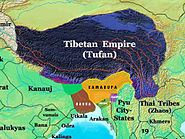

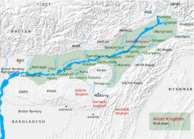














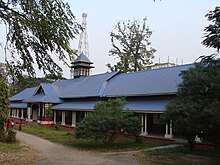
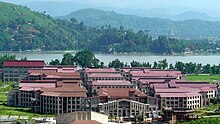

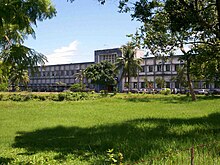







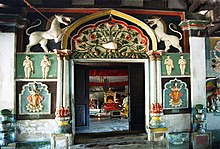




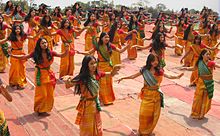
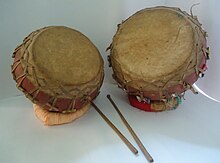



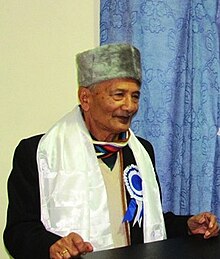




Great job.
ReplyDeletethanku
Delete